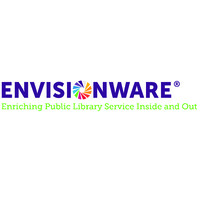
EnvisionWare, Inc.
EnvisionWare is a world leading supplier of self service and library efficiency solutions. Serving a global market of over 10,000 libraries with: - PC Reservation(R) computer management - LPT:One print management - LibraryPDA handheld circulation - Turnkey RFID systems for libraries - OneStop self-service circulation software and systems - EnvisionWare eCommerce Services for self service fine/fee payment and complete Staff financial management - Automated Materials Handling - Library Document Station that converts paper and books to digital for emailing, sending to smartphones and more - Enterprise Reporter for delivery of visualizations that map the complete patron experience in a public library - 24-Hour Library(tm) - a full-function free standing self service library. Offering the most complete and fully integrated turnkey systems for forward thinking libraries.






